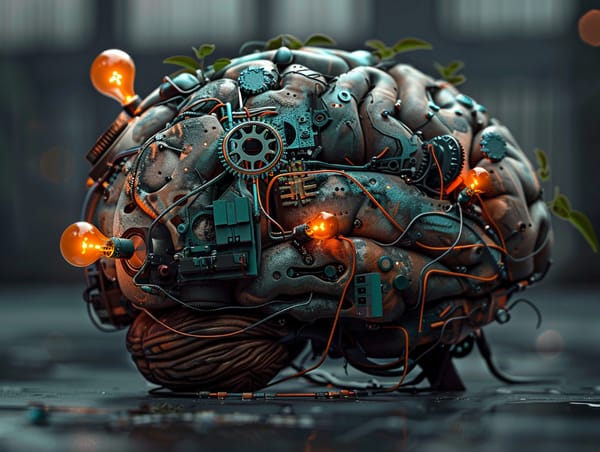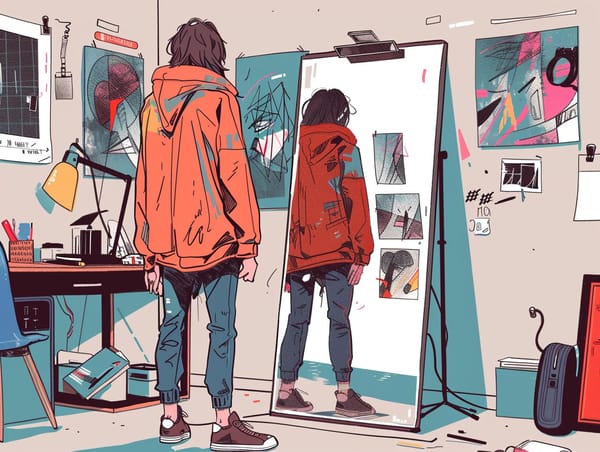How do I get better at designing?
This is a frequent question I get from people asking me about how they can improve their graphic design skills.

This is a frequent question I get from people asking me about how they can improve their graphic design skills.
Graphic design is a broad term that encompasses everything from web graphics, icons, and logos to advertisements and product packaging. It's no secret that the world of graphic design is becoming more competitive, so designers must constantly look for ways to improve their abilities. Fortunately, there are many things you can do in your own time to improve your design skills!
In this article, I've compiled a list of six tips and tricks that I hope will assist any designer in improving their skills. Whether you're creating posters or company branding packages, these pointers should help you ensure that your work always looks its best!
1. Begin by learning the fundamentals
To be a successful graphic designer, you must first learn the fundamentals.
This includes comprehending design principles such as balance, contrast and unity. It is also critical to understand how to use software programmes such as Adobe Photoshop and Illustrator effectively. Many online tutorials can teach you the fundamentals of these programmes, and it's critical to practise regularly to become more comfortable with them.
It's also a good idea to read graphic design books and stay up to date on industry trends. You'll be well on your way to becoming a successful graphic designer if you do all of these things!
2. Experiment with different styles and techniques
To improve as a graphic designer, it is necessary to experiment with various styles and techniques.
This will assist you in discovering your distinct style while also allowing you to learn new skills. It's important to remember that you won't become an expert overnight but if you practise every day, you should see some progress over time.
Here are some suggestions for things you can try to learn new techniques and improve your overall graphic design skills:
Browse the internet for inspiration. As a graphic designer, you must always look at the work of other designers. Maintain an image library of designs that inspire you as well as websites that publish contemporary designs. You can also use Pinterest to keep track of your favourite images or Dribbble to find images by designers you admire.
Experiment with a variety of styles and techniques. You don't have to stick to one style; try as many different techniques as you can. If you're not sure where to begin, look for inspiration websites that show great examples of various styles. You can then try to incorporate their designs into your own style by practising daily.
Keep a journal of your findings. Now that you're searching the internet for ideas and experimenting with new techniques, it's critical to keep track of everything you've learned. Make a list of any new skills you've learned that you think will come in handy as well as any design projects that inspire you. Remember to keep your notes somewhere easy to find in case you need to refer to them again in the future.
Make it a daily practice. Graphic design, like anything else, takes time and effort. It is not something that can be learned overnight so try to practise every day if at all possible. You can even set aside some time every day for this purpose. You don't need to spend hours on it; just a short time will help keep your skills fresh and up-to-date. Over time, you'll be able to see your designs evolve and improve.
3. Attend online classes or workshops
Many people want to improve their graphic design skills but are unsure how to do so.
Online classes or workshops are one option. These can be an excellent way to learn new techniques and receive feedback from experts. However, keep in mind that not everything you learn in these classes will apply to your own work. It's critical to put what you've learned into practice and develop your own style.
Online classes and workshops provide you with access to some of the best instructors in your field without requiring you to leave your home or travel to their lectures.
Because online courses allow you to do at least some of your learning on your own time, if there is a local event that conflicts with class times, it is simple to skip class! If you miss class due to a family emergency or something you don't feel guilty about, the lecture will always be available online for you to watch later.

4. Gather feedback from others
Graphic design is a collaborative process.
Your work is being judged by more than just your eyes. Others will criticise it as well and this feedback can be invaluable in assisting you in creating better designs.
When designing, you should always try to get feedback from others because they may see things that you don't because of their different perspectives on the project or graphic design in general.
It's important to remember that other people's opinions of your work are subjective, so if someone doesn't like what you've done, there may be something wrong with how you designed it rather than the design itself.
Recognise that people will sometimes say negative things about your work to make themselves appear smarter or more experienced than you. If you think the criticism is valid, try to learn from it and move on. Keep in mind that there will always be people who appreciate your work and some who won't.
If you want to improve your graphic design skills, make sure you can tell the difference between constructive and destructive feedback and only consider the former.
5. Use design resources wisely
As a freelance graphic designer, I understand how important it is to have a well-stocked arsenal of design resources.
However, with so many options available, it can be difficult to know which ones to use—and how to use them wisely.
Here are four suggestions for making the most of your graphic design resources:
- Always research before selecting a resource. Ascertain that it is the appropriate tool for the job.
- Experiment with various resources until you find the ones that are the most effective for you.
- Don't be afraid to seek advice from other designers. They might have resources you've never heard of before.
- Participate in online forums and communities to learn from other graphic designers and keep up with the latest graphic design trends.
Overall, keep in mind that graphic design is a skill that can be honed with practice. Don't forget to set aside time each day for serious practice as you seek to expand your knowledge and build your portfolio!
This brings me to number six, which is to practise, practise, practise!
You must practise to improve at anything. Graphic design is no different. The more practice you put in, the better you'll become. But don't worry if you're not a natural—with practice, anyone can improve. Simply follow these guidelines and continue to practise every day!
Every day, create something. There is no need to create anything spectacular. By developing the habit of designing, you will become more familiar with what works and what doesn't, allowing you to perform far better on your final projects.
Keep a sketchbook. There is something about drawing that helps to improve your creative thinking and ideas, which in turn will help you when creating designs.
Read articles and books about design. There are so many great resources available on the internet for designers looking to learn more and expand their knowledge of graphic design. Look them up today!
Bonus tips:
7. If at first you don't succeed, try again!
If something's not working out the way you wanted it to or if you've made a mistake, remember—you can always try again!
Just because your first design didn't work out doesn't mean that you won't succeed on your second, third or fourth attempt. Remember that one of the best ways to learn is by making mistakes. Mistakes show you what not to do and allow you to improve upon your work for future projects.
So don't be afraid to try again!

8. Be persistent!
Hang in there!
Every successful person has had to start somewhere. Persistence is one of the qualities that make a graphic designer successful, so remember to persevere and never give up!
Remember, it took years for many famous designers to become where they are today—so be patient with yourself.
I hope this blog post has given you some new ideas on how to improve your graphic design skills.
Don't worry if it still feels overwhelming! You can always sign up for my newsletter, which will deliver more design tips and tricks to your inbox every other week.



